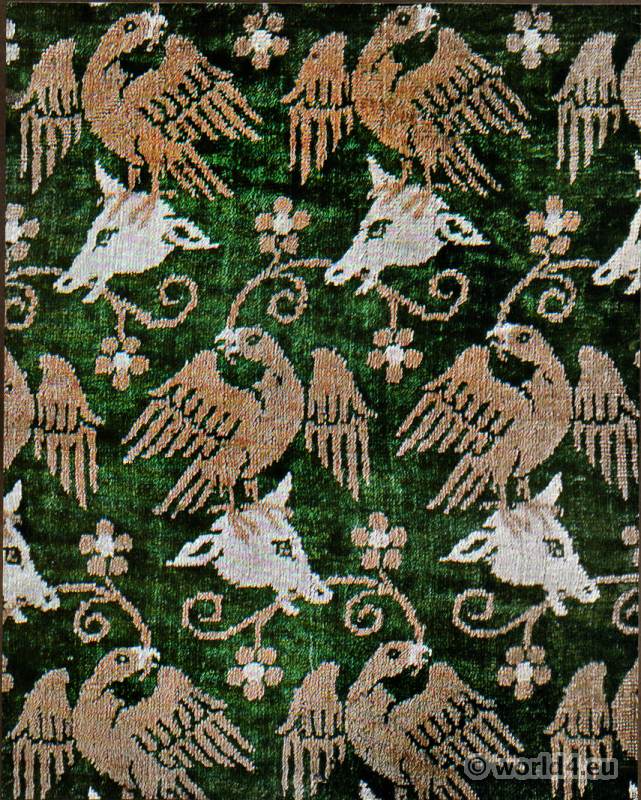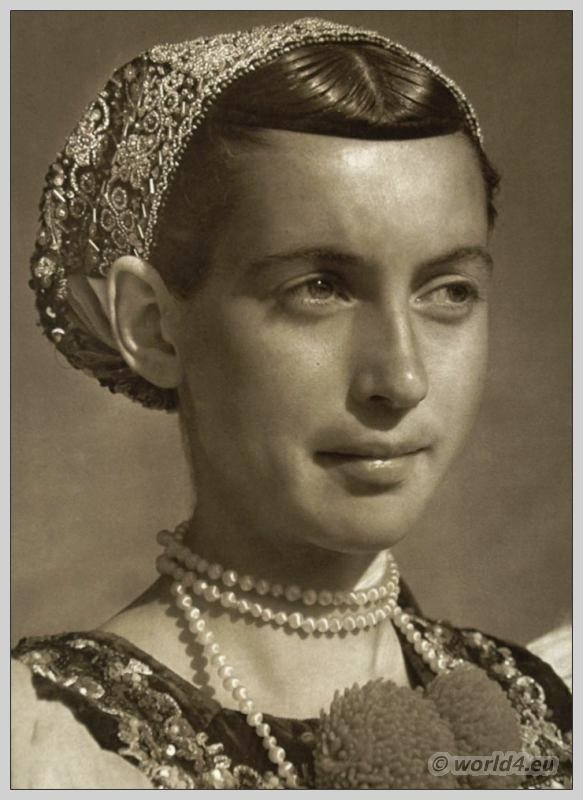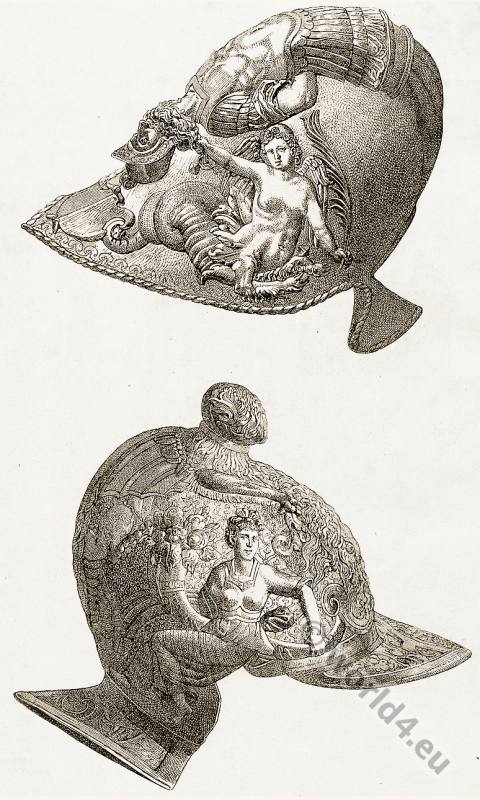
ITALIAN EMBROIDERED SILK HANGINGS. SIXTEENTH CENTURY.
In the Possession of the Earl of Carnarvon.
THIS engraving shows the upper and lower portions of a vertical panel, supposed to have originally formed a pilaster or border to a piece of tapestry. It is executed in hand-embroidery of silk and gold thread. Although clearly Italian, the exact locality of its manufacture can only be conjectured. The celebrity of the silk and velvet fabrics of Genoa, considered in connexion with a certain florid character in design in this specimen, quite in accordance with Genoese art, would, perhaps, justify its being ascribed to that city.
These characteristics of design, however, hold equally good of Venice, the massive strap-work and foliated scroll ornament being also quite in keeping with the style of the gorgeous furniture so largely manufactured in the latter place. But whether stripped from the walls of some palace of the renowned “Queen of the Adriatic,” or of her superb rival of the Mediterranean, this piece is certainly a relic of a kind of splendor to which our modern style of house decoration affords no parallel.
In the olden time fortunes were lavished on the walls of a palace, but the outlay sufficed once and for all; the work once done lasted for centuries, generation after generation lived and died amidst the slowly waning glories of those splendid homes. In this age of wall-papers and whitewash, we can form but a faint idea of the extraordinary magnificence of the saloons of the great Italian palaces – the few that have still escaped the ravages of the “Black Band,” as our Continental neighbors term the horde of dealers, who for half a century have not ceased to overrun the Continent, tearing down and scattering piecemeal the noblest works of ancient architects, have faded and moldered away to but a shadow of their original beauty.
But even in decay there is a prevailing stamp of architectural greatness, which impresses us from the contrast it affords to the triviality and obvious want of permanence of modern works. Ceilings and cornices in carved wood, or scarcely less costly stucco – work, blazing with gold or painted by the masterly hand of a Veronese or a Tintoret; the walls covered with precious tapestry, the floors of parquetage or rare marbles; chairs and curtains all gilding and velvet; cabinets, candelabra, tables, mirrors, all designed and wrought by artists, each piece an integral part of the entire decorative scheme. How different this is to the petty, crowded, comfortable style of English furnishing! Englishmen are apt to sneer at the faded magnificence of Continental houses, as the shabby-fine style, forgetting that, although faded, it is not common, and unconscious that our own habits in this respect are more really vulgar”.
Source: The treasury of ornamental art, illustrations of objects of art and vertù by Sir John Charles Robinson. Marlborough House (London, England), 1858.
Related
Discover more from World4 Costume Culture History
Subscribe to get the latest posts sent to your email.






